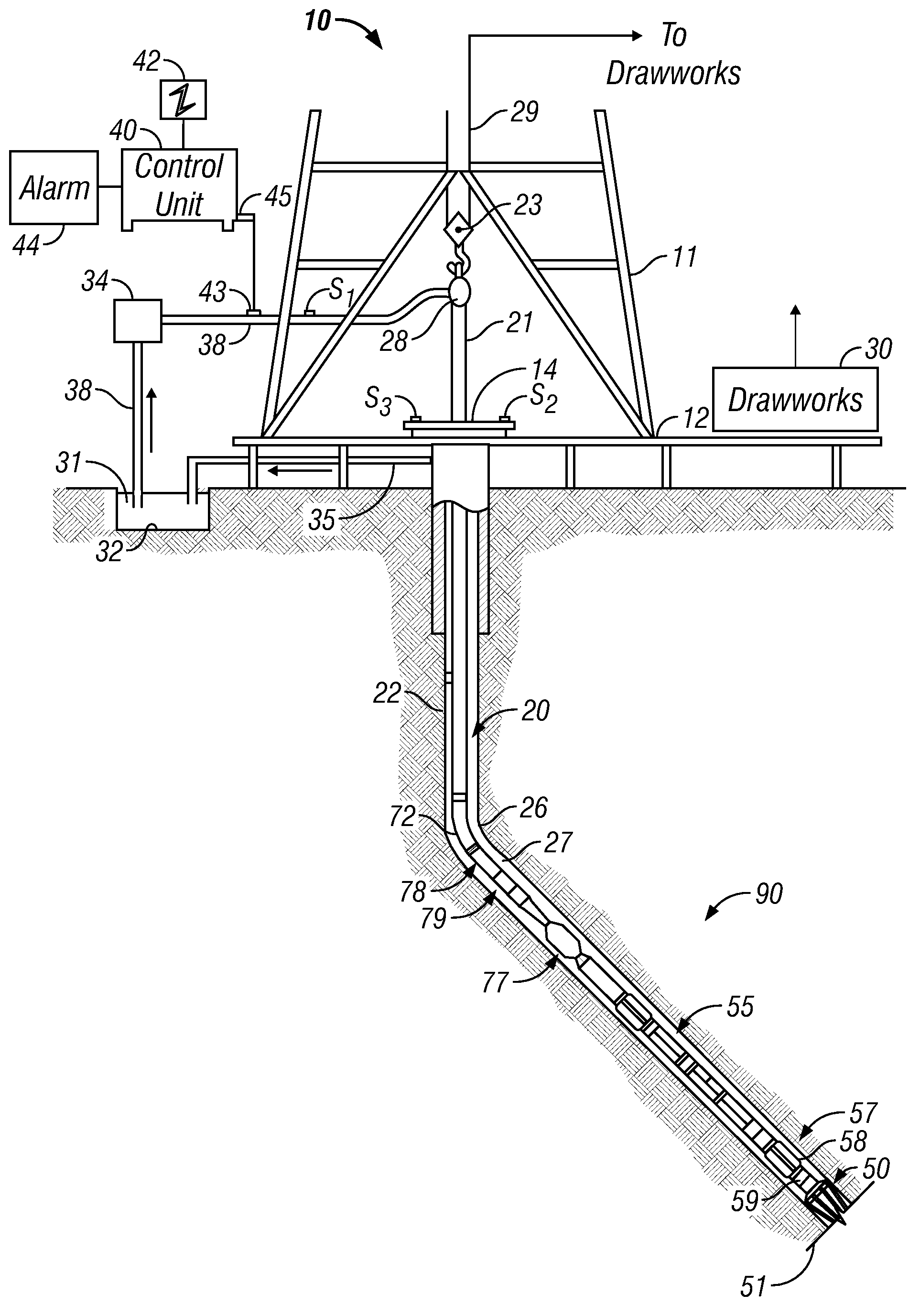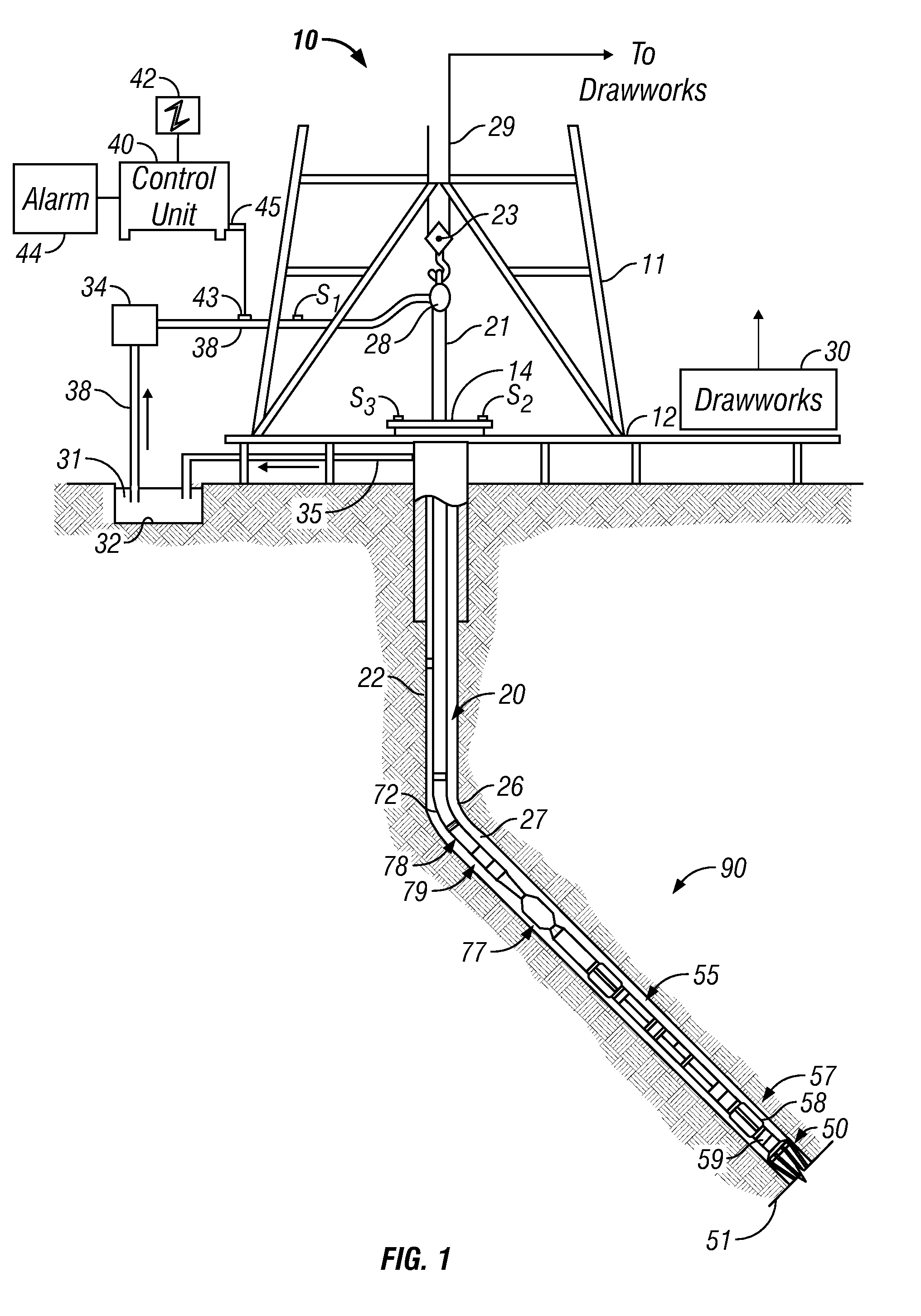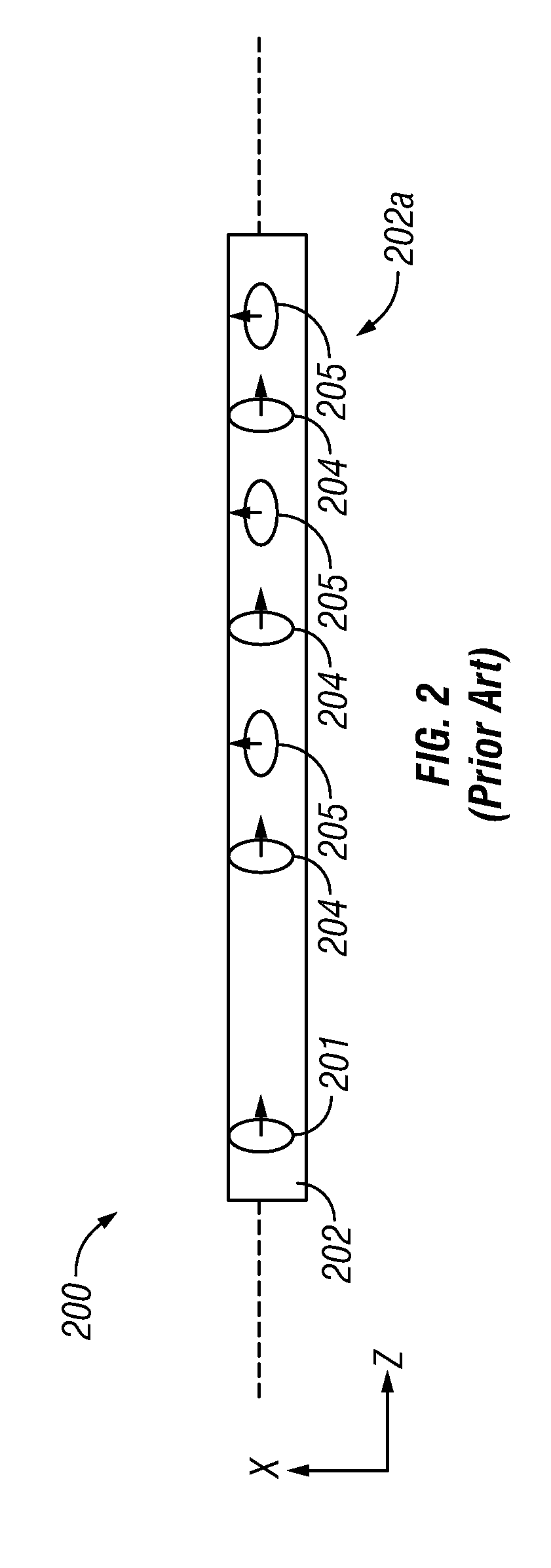Electromagnetic and Magnetostatic Shield to Perform Measurements Ahead of the Drill Bit
a magnetostatic shield and drill bit technology, applied in the field of electromagnetically inducible well logging, can solve the problems of reducing the sensitivity of the measured em field, introducing a metal drill pipe close, and limited tool group
- Summary
- Abstract
- Description
- Claims
- Application Information
AI Technical Summary
Benefits of technology
Problems solved by technology
Method used
Image
Examples
first embodiment
[0041]Although FIG. 2 illustrates one configuration of the transmitter 201 and receiver(s) 204, 205, a variety of transmitter-receiver configurations can be used in various illustrative embodiments of the present disclosure. In the MWD transient tool 200, the Z-oriented transmitter coil 201 can be positioned along the damping portion 202, and a receiver coil pair 205-204 comprising an X-oriented coil 205 and a Z-oriented receiver coil 204 may be axially displaced from the Z-oriented transmitter coil 201. The receiver pair 205-204 may typically be placed at a distance of from about 0 m to about 10 m from the transmitter coil 201, also along the damping portion 202. A transmitter-receiver distance less than approximately 2 m from the transmitter coil 201 may further enable geosteering. The term geosteering refers to control of the drilling direction of the BHA based upon determined distances from an interface in the earth formation. Typically, in geosteering, it is desirable to mainta...
third embodiment
[0053]In order to boost a resolution of transient system further a third embodiment that utilizes a combination of a three coil bucking system and copper shield. A copper shield is assumed to be covering whole space between transmitter and receivers (about 7 m long) and being thick enough (couple mm) to prevent penetration of eddy currents into the steel pipe. Further information about the copper shield may be found in Itskovich '381.
[0054]To prove an effectiveness of the copper shield we performed mathematical modeling of the bucked response for the system with copper shield surrounded by formation described earlier. Modeling is performed for the water-oil boundary placed at 8 m from the transient system, which represents more of a challenge than a model with the boundary at 4 m, since as was pointed out earlier the larger the distance to the boundary, the later is the time when this boundary can be detected.
[0055]Results for 1 and 2 m-bucked receivers are presented in FIG. 15, whi...
PUM
 Login to View More
Login to View More Abstract
Description
Claims
Application Information
 Login to View More
Login to View More - R&D
- Intellectual Property
- Life Sciences
- Materials
- Tech Scout
- Unparalleled Data Quality
- Higher Quality Content
- 60% Fewer Hallucinations
Browse by: Latest US Patents, China's latest patents, Technical Efficacy Thesaurus, Application Domain, Technology Topic, Popular Technical Reports.
© 2025 PatSnap. All rights reserved.Legal|Privacy policy|Modern Slavery Act Transparency Statement|Sitemap|About US| Contact US: help@patsnap.com



